Ordering a beer shouldn't be intimidating—here's how to find the right one, whether you're a beer-novice or a seasoned drinker.

If you're a craft beer lover, take note: it's likely that, because of the recent glut of craft beer in America, you probably now live within 10 miles of a local brewery. These days, an impressive selection isn’t relegated to beer-focused bars and brewpubs, frequented only by intimidating experts who would shudder at pouring a Lambic into a pint glass (just the thought!). Instead, a solid beer selection can be found in some surprising places, from chain restaurants to gas stations and drugstores.
With so many places offering a more interesting and diverse beer menu, the question becomes what to order. Whether you already enjoy craft beer, or are curious to see what all the fuss is about, it’s never been easier to find something you’ll love. Will Stephens, co-founder of BeerMenus.com, offers five tips for choosing your perfect pint:
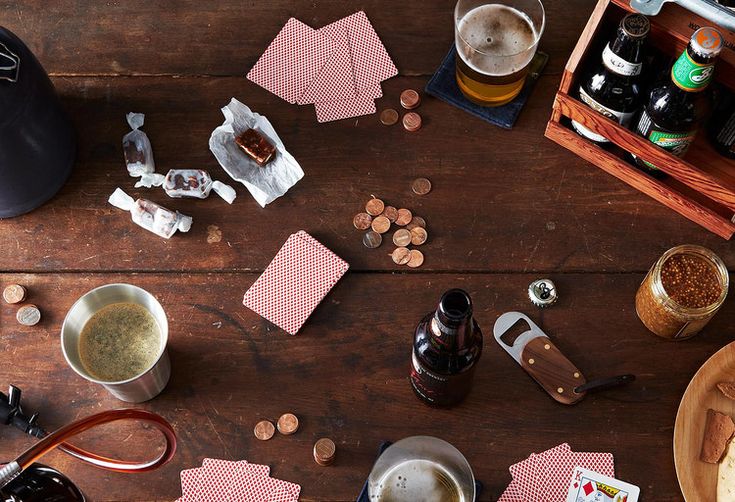
1. Talk to your server.
Let your server know your craft beer comfort level. If you’re in the mood for a brew but aren’t sure where to start, divulge your lack of expertise—this is a safe space—and mention how adventurous (or unadventurous) you’re feeling. With this in mind, they could recommend a crisp, more universally palate-pleasing beer like a lager, or something more surprising, like a sour or fruit beer. “The name sounds off-putting, but sour beers are so interesting and complex. I’m constantly amazed by how many people like them, Bud Light drinkers included,” says Stephens.
If you have some beer knowledge, Stephens suggests telling your server which styles or specific beers you normally enjoy to get a recommendation based on your preferences. He says, “If it’s on draft, tasting a sample could save you from ordering a pint of something you don’t like.”
If you're seasoned and open to new things, ask if there’s anything they particularly like, or if there’s anything special available—your curiosity could land you a rare or seasonal beer not on the menu.
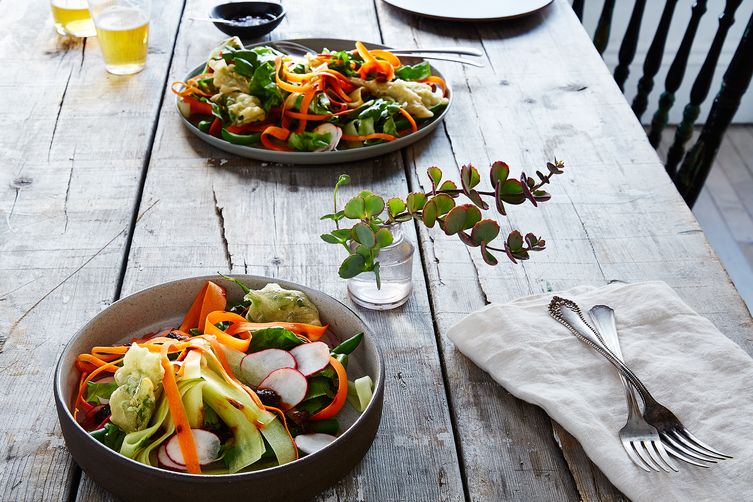
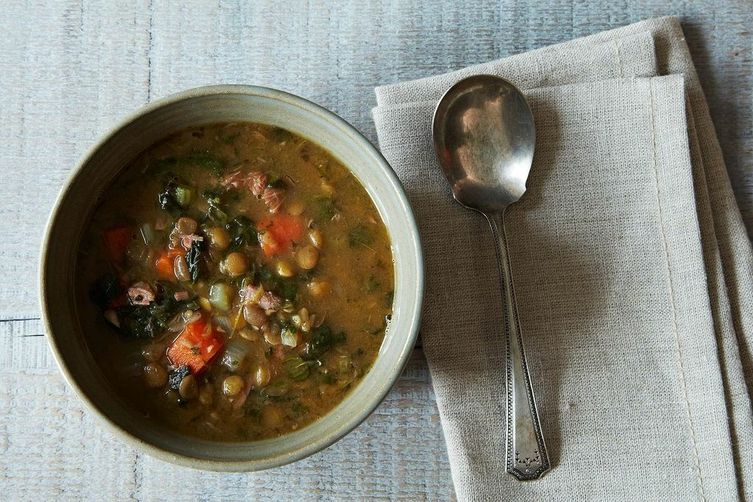
As with wine, a beer that pairs well with a summer salad may not go with a rich stew—consider what you're eating before ordering a brew.
2. Consider your cuisine.
Are you planning on ordering a pot roast or a summer salad? Like wine, a good beer pairing can add immeasurable enjoyment to your meal. Of course taste is subjective, but as a general rule, Stephens suggests, “Red meat pairs well with brown ales, porters, and stouts, while less bitter beers like a kolsch, helles lager, or pilsner won’t overpower lighter fare like fish or vegetables. IPAs are the perfect companion to Mexican dishes—the hops stand up nicely to the spice and compliment the bright aromatics of cilantro and lime. Porters and stouts are great for desserts, providing mellow chocolate and coffee notes to contrast the sweet.”
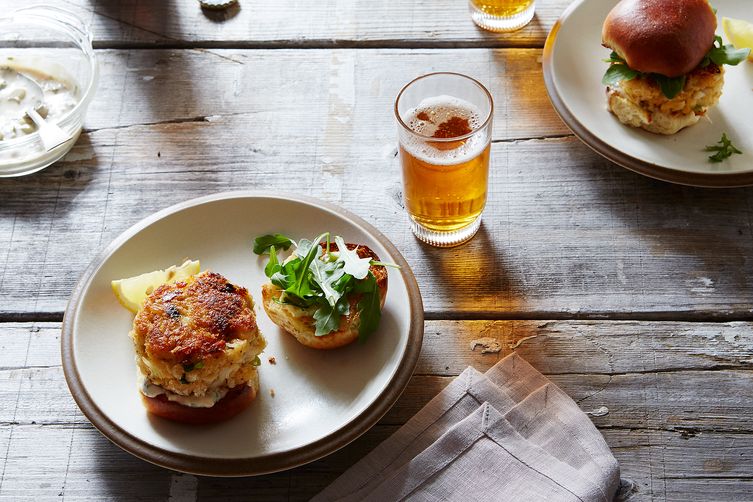
3. Check the ABV (or, alcohol by volume).
A beer's ABV can run the gamut, from 2.7% for Evil Twin Bikini Beer to Dogfish Head's World Wide Stout coming in at a whopping 20%. And since a beer’s name usually won’t give you any clues to its ABV (Pipeworks Ninja Vs. Unicorn?) it’s best to check before ordering.
If you’re going to have a few, “plan ahead and start with the lightest beers first. High ABV or very hoppy beers will crush your palate and make it harder to taste your next beer. I often start with a lager or something equally light and work my way up to an IPA—or, in the winter, a barleywine or imperial stout,” explains Stephens.
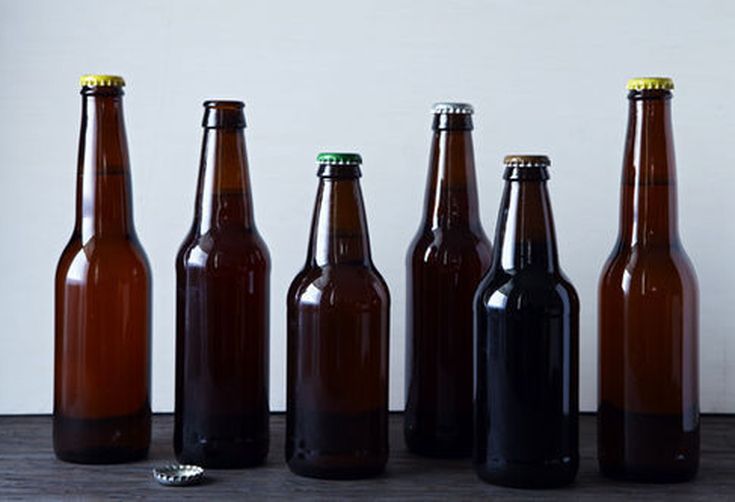
4. Don’t overlook the bottle and can list.
It’s true that, with its quicker turnover, draft beer is usually the freshest option. Also, Stephens notes that “with many small breweries unable to afford expensive bottling or canning equipment, draft usually wins when seeking a local brew. But some beers are just better aged, like bottle-conditioned Belgians [which are naturally fermented by yeast in the bottle] and boozy, barrel-aged beers like imperial stouts, barleywines, and sours. The higher alcohol helps to preserve the beer, and in these cases, aging can bring out a richer, more complex flavor.”
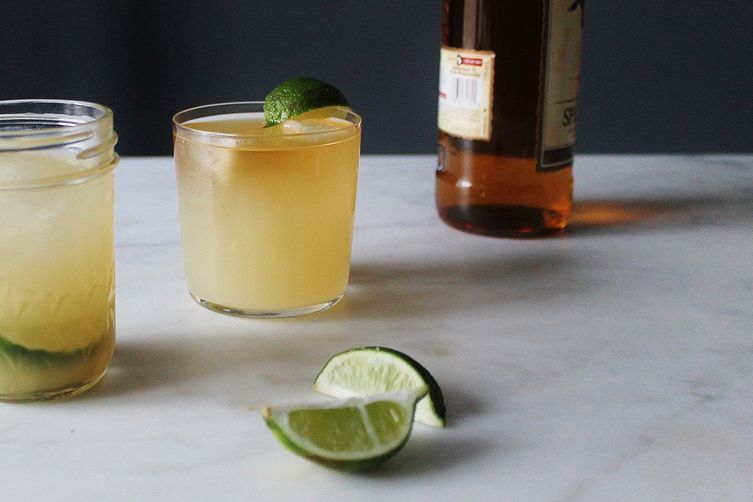
5. Drink what's in season.
There’s nothing wrong with enjoying a stout in the summer (they can be remarkably low in ABV) but certain styles of beer feel perfect for a given season: A darker or heavier beer like a porter or barleywine can warm in the winter, while nothing satisfies like a super-fresh IPA, a wheat beer, or a tart Gose or Berliner Weisse on a humid summer day.
Also, certain beers are only available seasonally, so when you see them pop up on the menu, you know they’re fresh (think pumpkin beer or winter ales). Stephens’ favorites are fresh-hopped beers. “Hops are harvested once a year and typically dried and packaged, but wet hops go from the vine to the brew kettle in less than 24 hours. It makes for a fresh, nuanced, hoppy beer with more complex character. The hop harvest is late August or early September, so look out for these beers in October.”
What are some of your favorite beers? Tell us in the comments below!
Photo of summer salad by Bobbi Lin; photo of crab cakes by Mark Weinberg; all other photos by James Ransom








See what other Food52 readers are saying.